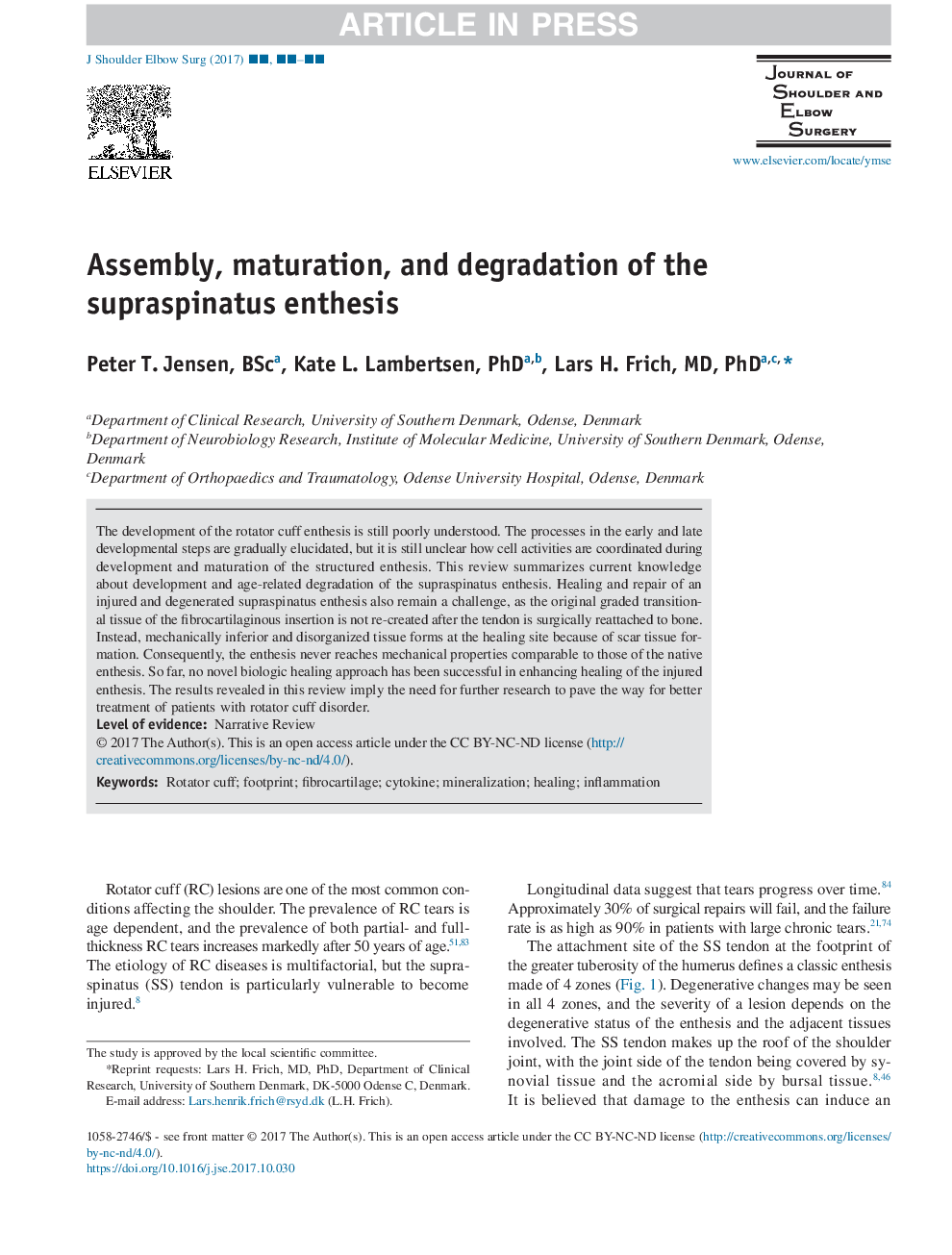| Article ID | Journal | Published Year | Pages | File Type |
|---|---|---|---|---|
| 8800929 | Journal of Shoulder and Elbow Surgery | 2018 | 12 Pages |
Abstract
The development of the rotator cuff enthesis is still poorly understood. The processes in the early and late developmental steps are gradually elucidated, but it is still unclear how cell activities are coordinated during development and maturation of the structured enthesis. This review summarizes current knowledge about development and age-related degradation of the supraspinatus enthesis. Healing and repair of an injured and degenerated supraspinatus enthesis also remain a challenge, as the original graded transitional tissue of the fibrocartilaginous insertion is not re-created after the tendon is surgically reattached to bone. Instead, mechanically inferior and disorganized tissue forms at the healing site because of scar tissue formation. Consequently, the enthesis never reaches mechanical properties comparable to those of the native enthesis. So far, no novel biologic healing approach has been successful in enhancing healing of the injured enthesis. The results revealed in this review imply the need for further research to pave the way for better treatment of patients with rotator cuff disorder.
Keywords
Related Topics
Health Sciences
Medicine and Dentistry
Orthopedics, Sports Medicine and Rehabilitation
Authors
Peter T. BSc, Kate L. PhD, Lars H. MD, PhD,
